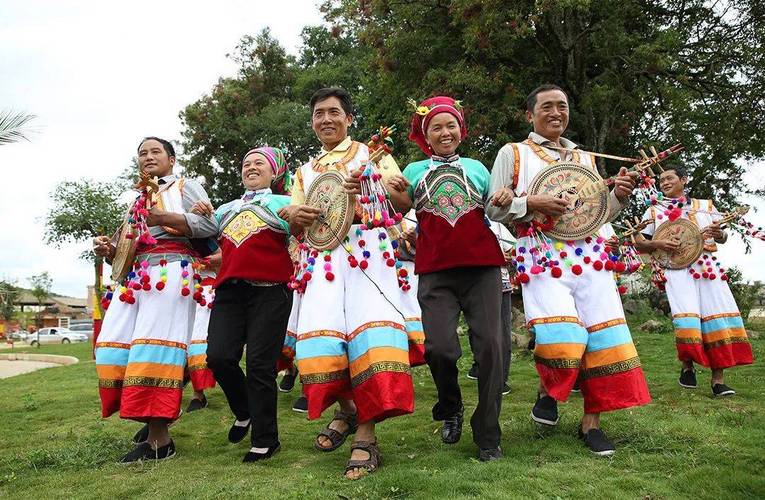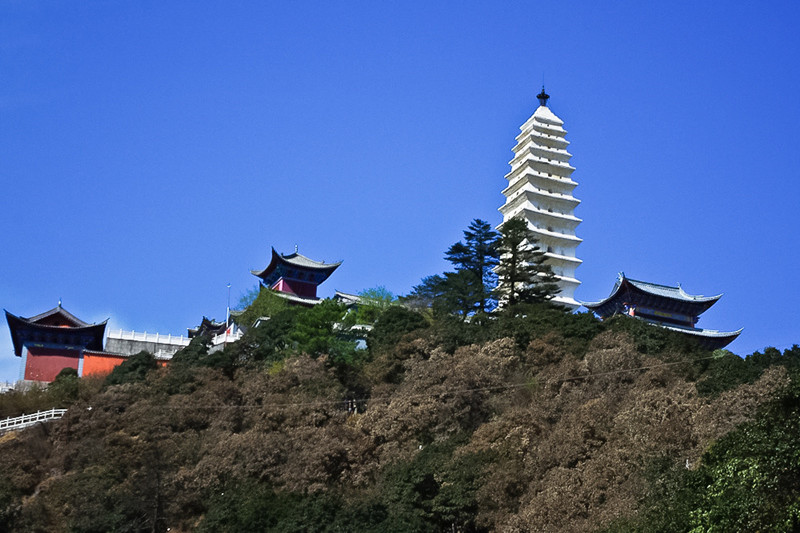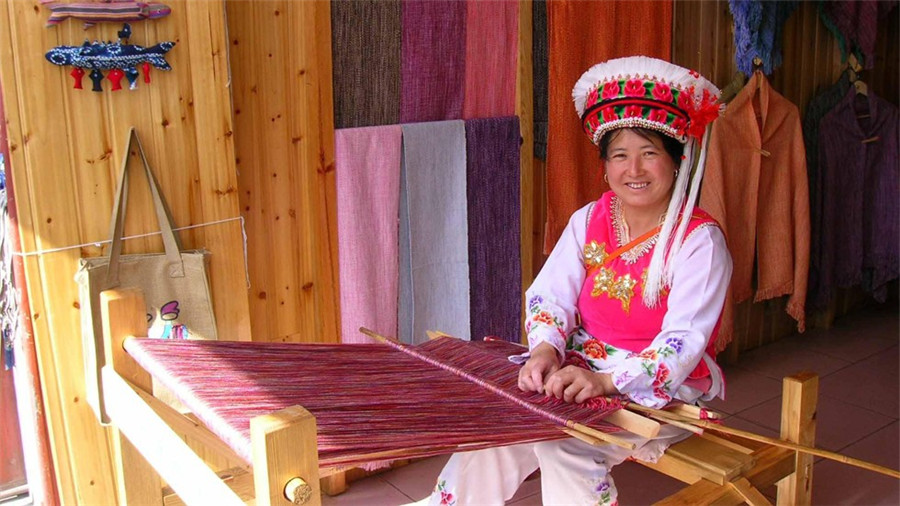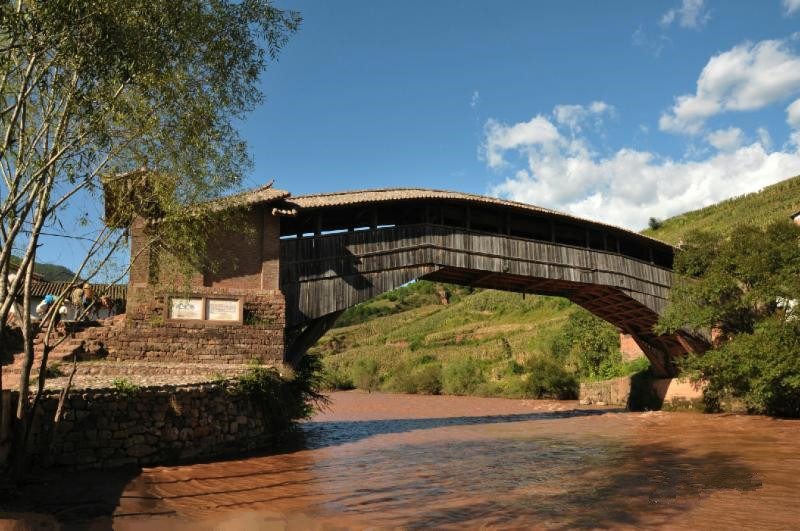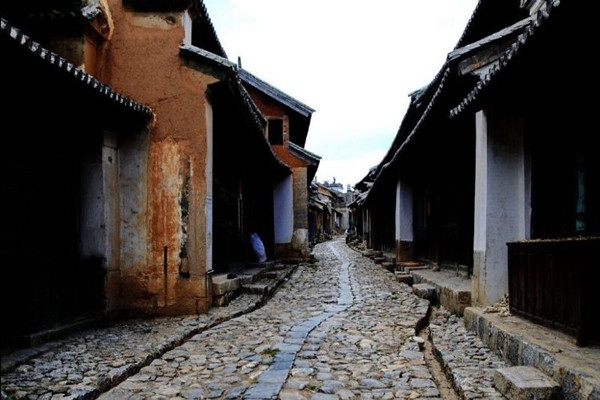Dali Overview
Dali Bai Autonomous Prefecture is located in the west of central Yunnan Province, with an altitude of 2,090 meters. It is adjacent to Chuxiong Prefecture in the east, Pu'er City and Lincang City in the south, Baoshan City and Nujiang Prefecture in the west, and Lijiang City in the north. Dali Overview introduces the basic information for you to have a better Dali Tour.
Basic Information
- Chinese Name: 大理白族自治州
- English Name: Dali Bai Autonomous Prefecture
- Location: Central Yunnan
- Administrative Category: Prefecture
- Seat of Government: Xiaguan Town, Dali City
- Area: 29, 459 square kilometers
- Population: 3, 400, 000
- Main Ethnic Groups: Han, Bai, Yi, Hui, Lisu, Miao, Naxi, Zhuang, Tibetan, Blang, Lahu, Achang, Dai
- Airport: Dali Huangcaoba Airport
- Top Universities: Dali University, West Yunnan University of Applied Sciences, Yunnan University of Finance and Economics
- Important Festival and Activities: The Fishing Opening Festival, Hungry Ghost Festival, Dragon Boat Race Festival, Xiaojizu Singing Festival, March Street (Sanyuejie) Festival
- Railway Station: Dali Railway Station
- Famous Attractions: Erhai Lake, Cangshan Mountain, Three Pagodas and Chongsheng Monastery, Shaxi Old Town, Dali Ancient Town, Xizhou Old Town, Weishan Ancient Town, Nuodeng Old Town, Butterfly Spring in Dali City, Jizu Mountain, Shibao Mountain
Geography
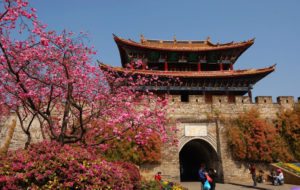
Dali Bai Autonomous Prefecture is located in the west of central Yunnan Province, with an altitude of 2,090 meters. It is adjacent to Chuxiong Prefecture in the east, Pu'er City and Lincang City in the south, Baoshan City and Nujiang Prefecture in the west, and Lijiang City in the north. Dali Prefecture is located at the junction of the Yunnan-Guizhou Plateau and the Hengduan Mountains. The terrain is high in the northwest and low in the southeast. The landform is complex and diverse, and the west of Cangshan Mountain is the alpine valley.The east of Cangshan Mountain and west of Xiangyun County is the steep slope of Zhongshan.The mountains in the territory are mainly Yunling Mountains and Nushan Mountains. The Cangshan Mountain is located in the central Dali Bai Autonomous Prefecture. The Xueban Mountain at the junction of Jianchuan in the north and Lanping in the Lijiang is the highest peak in the mountains in Dali Bai Autonomous Prefecture, with an elevation of 4,295 meters. The lowest point is the Hongqiba(红旗坝) on the side of Nujiang River of Yunlong County, with an elevation of 730 meters.
Climate
Dali enjoys low latitude plateau monsoon climate, which is characterized by small temperature difference between four seasons. Dali, known as the "Oriental Switzerland", has around 126 days in the year at the temperature of 18-21℃, which is the most appropriate temperature for a holiday. In addition, it enjoys abundant sunshine, which is most popular during the winter due to its high altitude. In general, Dali is a place that can be visited all year round with colorful flowers blossoming everywhere. See more about Dali Climate.
Best Time to Visit Dali
This subtropical highland monsoon climate makes Dali a popular destination which can be visited all year round with warm temperature, lots of sunshine and fresh air. It is most popular during winter months for those people who live in a cold region. March-June is the best time to visit Dali, especially in spring. See more about Best Time to Visit Dali.
Administrative Divisions
Dali Bai Autonomous Prefecture has jurisdiction over 1 county-level city, 8 counties and 3 autonomous counties.
- 1 County-level City: Dali City(大理市)
- 8 Counties: Xiangyun County(祥云县), Binchuan County(宾川县), Midu County(弥渡县), Yongping County(永平县), Yunlong County(云龙县), Eryuan County(洱源县), Jianchuan County(剑川县), Heqing County(鹤庆县),
- 3 Autonomous Counties: Yangbi Yi Autonomous County(漾濞彝族自治县), Nanjian Yi Autonomous County(南涧彝族自治县), Weishan Yi and Hui Autonomous County(巍山彝族回族自治县)
History
Dali has a long and rather glorious history. In 738, the Nanzhao Kingdom was established with Dali as its capital and covered a large area of Yunnan and northern Burma and parts of Sichuan and Guizhou. The original capital of the Nanzhao Kingdom was located in Weishan (within Dali Prefecture) and later moved to site around Erhai Lake. The conquered territories were quite large and remained so for a long time. The kingdom survived almost 200 years and had 13 kings before collapsing. After several decades of chaos the Kingdom of Dali emerged in 937.
More about History of Dali.
Culture
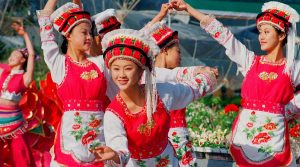
Dali Ethnic culture is very colorful. There are 13 ethnic groups in Dali Bai Autonomous Prefecture, namely, Han, Bai, Yi, Hui, Lisu, Miao, Naxi, Zhuang, Tibetan, Bulang, Lahu, Achang, Dai and other ethnic groups. The local culture of Dali is splendid and the ethnic customs are rich. As a political, economic, and cultural center of Yunnan for hundreds of years, Dali is regarded as an important place in West Yunnan. Folk oral literature and local ethnic traditions are outstanding features of the so-called 'Erhai Culture'.There are countless legends and myths about the Dragon King, old poems of ethnic favor, music, paintings, residential houses, religions, costumes and festivals. Although influenced by Indian and Chinese culture during Nanzhao and Dali periods, the ethnicity retains a strong uniqueness that persists to this day.
Transportation
Dali Transportation, to some extent, is strongly linked to Dali Tours. As a famous tourist attraction in China, Dali has the best transport network compared with other sightseeing places in China. At present, the main transportation in Dali consists of airplane, trains, buses, ships and so on. Dali has an extensive public transport system, largely based on buses, taxis. Therefore, it is very convenient to get to Dali by air, train, long-distance bus.
More about Dali Transportation.
Things to Do
When you come to Dali, do not worry what to do in Dali. Dali Attractions are abundant and are full of all kinds, including natural sceneries, human sceneries and all kinds of villages where you can experience the rich ethnic culture. The scenery of Dali is a picture of “Wind, Flower, Snow, Moon”. You can go boating in Erhai Lake and feel the boundless of the heaven and earth; visit the holy land of Jizu Mountain to listen to the croon of the Sanskrit, and see the light of the Buddha. Under the sunset, feel the elegance of Dali. And pursue the modern prosperity at the beautiful night.
Top Attractions in Dali
- Erhai Lake
- Cangshan Mountain, Dali
- Three Pagodas and Chongsheng Monastery
- Shaxi Old Town
- Dali Ancient Town
- Xizhou Old Town
- Weishan Ancient Town
- Nuodeng Old Town in Yunlong County
- Jinhua Old Town in Jianchuan County, Dali
- Butterfly Spring in Dali City
- Jizu Mountain in Binchuan County
- Shibao Mountain in Jianchuan County
Economy
In 2018, the gross domestic product (GDP) of the Dali Bai Autonomous Prefecture was 112.244 billion yuan, with the year-on-year increase of 9.3%. In terms of industries, the added value of the primary industry was 22.481 billion yuan, with the year-on-year increase of 6.3%; the added value of the secondary industry was 42.477 billion yuan, with the year-on-year increase of 11.9%; the added value of the tertiary industry was 47.286 billion yuan, with the year-on-year increase of 8.2%. The three industrial structures were adjusted from 20.2:37.3:42.5 of the previous year to 20.0:37.9:42.1. The per capita GDP of the Prefecture reached 31,253 yuan, with the year-on-year increase of 8.7%. The non-public sector of the economy achieved an added value of 53.315 billion yuan, with the year-on-year increase of 10.6%, accounting for 47.5% of the Prefecture's GDP.
Natural Resources
Mineral Resources
The marble, as the non-metallic mineral, are well-known in home and abroad. According to preliminary investigations, only the reserves of marble in the Xiaocen Peak of Cangshan Mountain reached 100 million cubic meters. There are also rich reserves of limestone, quartz sand, fluorite, clay, coal, etc. Among them, the newly discovered super large gold mine in Beiya, Heqing County has already identified 127 tons of gold resources, estimated 50 million tons of symbiotic iron ore, 3,000 tons of associated silver, and 200,000 tons of copper metal. Experts believe that the current proven gold resources show that yunnan gold resources also ranked first in southwest China.
Water Resources
The water resources include freshwater lake-Erhai Lake, rich Cangshan spring water and groundwater; geothermal resources include hot springs only in Tangzipu Hot Spring, with a water flow of 1,310 cubic meters per hour and the water temperature of 76.5 °C. The groundwater runoff is 226 million cubic meters based on 75% of the driest flow data.
Land Resources
The land area of Dali Prefecture is 29,459 square kilometers, and the mountain area accounts for more than 80% of the total area of Dali. The existing cultivated land is 183,161 hectares, of which 90,458 hectares are fields and 92,703 hectares are land. The park covers an area of 13,333.33 hectares, accounting for 0.5% of the total land area. It is a production base for citrus, apple, peach, plum, pear, tea and mulberry; the water area is 55,333.33 hectares, accounting for about 1.9% of the land area.

 7 Days GolfingTour
7 Days GolfingTour
 8 Days Group Tour
8 Days Group Tour
 8 Days Yunnan Tour
8 Days Yunnan Tour
 7 Days Shangri La Hiking
7 Days Shangri La Hiking
 11 Days Yunnan Tour
11 Days Yunnan Tour
 6 Days Yuanyang Terraces
6 Days Yuanyang Terraces
 11 Days Yunnan Tour
11 Days Yunnan Tour
 8 Days South Yunnan
8 Days South Yunnan
 7 Days Tea Tour
7 Days Tea Tour
 8 Days Muslim Tour
8 Days Muslim Tour
 12 Days Self-Driving
12 Days Self-Driving
 4 Days Haba Climbing
4 Days Haba Climbing
 Tiger Leaping Gorge
Tiger Leaping Gorge
 Stone Forest
Stone Forest
 Yunnan-Tibet
Yunnan-Tibet
 Hani Rice Terraces
Hani Rice Terraces
 Kunming
Kunming
 Lijiang
Lijiang
 Shangri-la
Shangri-la
 Dali
Dali
 XishuangBanna
XishuangBanna
 Honghe
Honghe
 Kunming
Kunming
 Lijiang
Lijiang
 Shangri-la
Shangri-la
 Yuanyang Rice Terraces
Yuanyang Rice Terraces
 Nujiang
Nujiang
 XishuangBanna
XishuangBanna
 Spring City Golf
Spring City Golf
 Snow Mountain Golf
Snow Mountain Golf
 Stone Mountain Golf
Stone Mountain Golf
